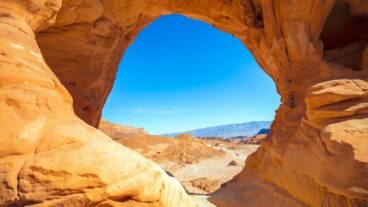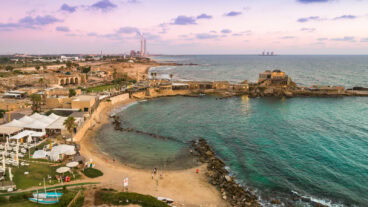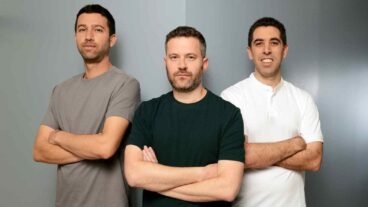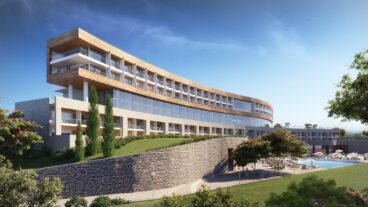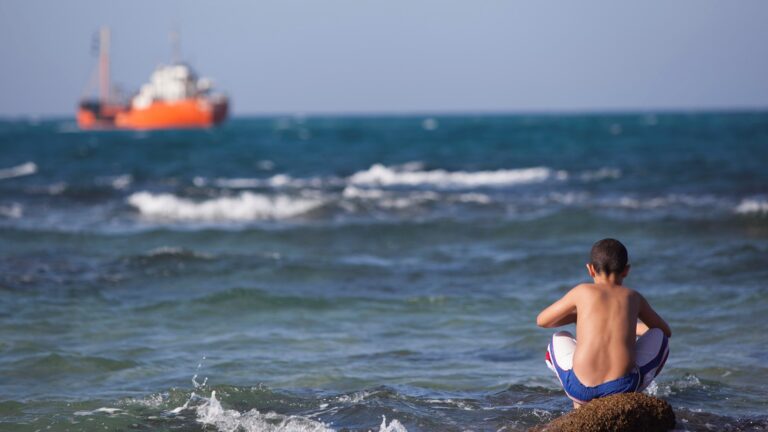The ancient city of Hippos in northern Israel derives its name from the Greek word for “horse.” And yet, archeologists have yet to uncover racing grounds that might have once upon a time graced the place.
This glaring deficit aside, Hippos, or Sussita in Hebrew, is a stunning archeological site that recently became a national park in a bid to both make it more accessible and convenient for the public to visit and to safeguard the ruins and mosaics that adorn it.
“It’s a visually incredible and historically important archeological site,” Dror Ben-Yosef, northern district archeologist for the Israel Nature and Parks Authority, tells ISRAEL21c.
“The story of the city begins in the Hellenistic period in the third century BCE and grows and reaches its peak in the Roman period, when the city is planned and built according to what you could call the Roman standard, with everything that a city should have,” Ben-Yosef explains.
“Then, it becomes a distinctly Christian city during the Byzantine period. The city accordingly undergoes change, and seven churches – which we’ve uncovered – were built. The city began sliding back down with the Islamic conquest in the seventh century CE, and the last nail in its coffin was in 749, when a catastrophic earthquake shook the Land of Israel, and the city was destroyed and not settled again.”
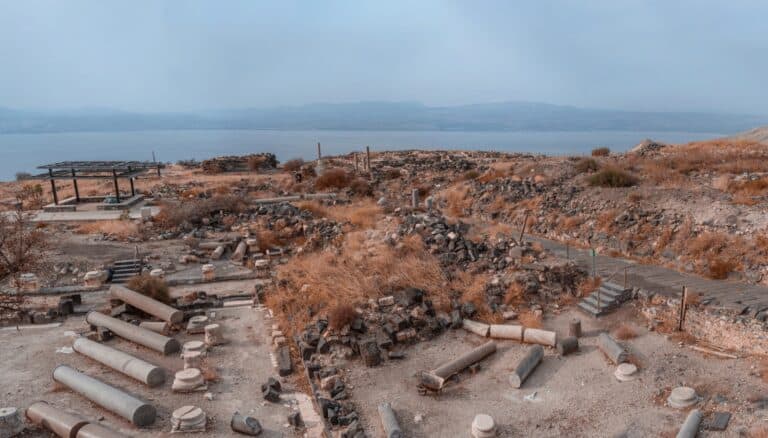
What remains of Hippos, on the Golan Heights overlooking the Sea of Galilee, has been excavated for the past 30 years and has drawn growing numbers of visitors who’ve hiked up the mountain to marvel at the ruins.
This led the INPA to turn the site earlier this year into a proper national park with a visitors’ center, drinking water and shade.
“The INPA has around 10,000 sites all around Israel,” Ben-Yosef explains.
“Of these, around 70 of them are national parks open to the public. These are large sites with a critical mass of findings, such as Masada and Tzipori. We came to the conclusion that Sussita should join this group. There’s very high demand from the public, and we didn’t want them to visit and damage the ruins while also not enjoying a complete experience.”
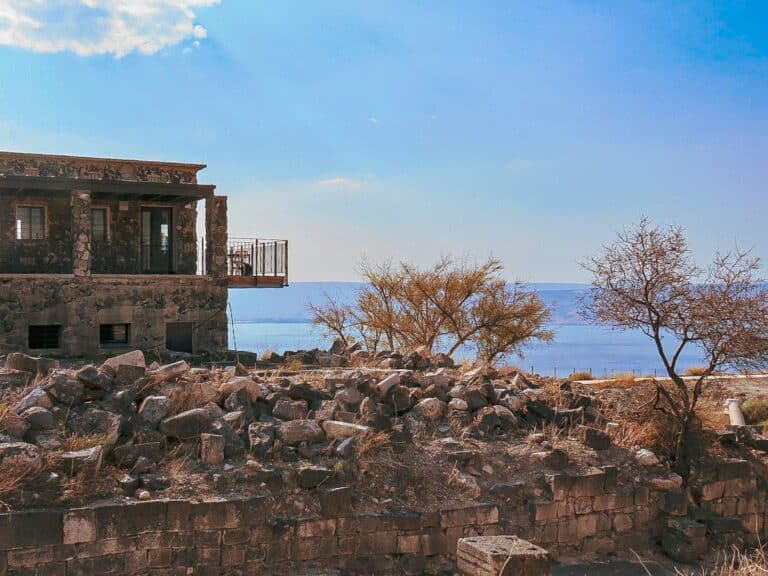
Beautifully excavated
Thousands of people are flocking to this relatively small site. All the main sights to see can be covered in an hour or an hour and a half, Ben-Yosef says.
“There’s a central street called a decumanus, a horizontal road that crosses the city from east to west, and there’s also a cardo that crosses it from north to south. There’s a Roman basilica, which is a huge public building that also served as a place of trade and meeting and sometimes had a market. It’s been excavated beautifully.”
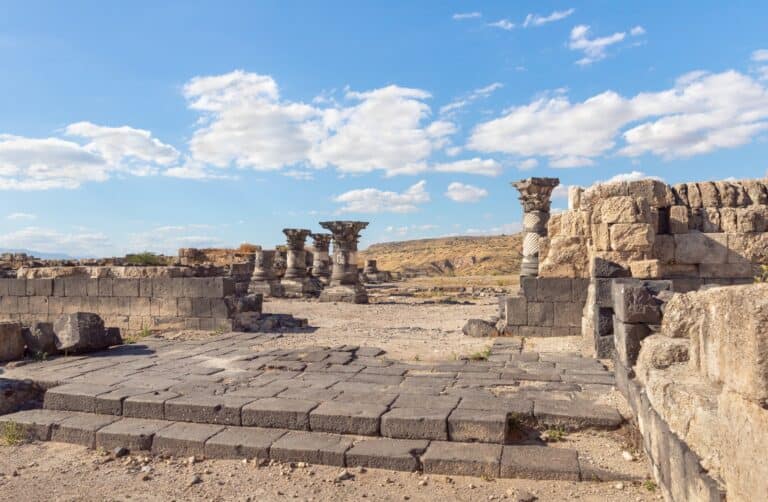
In addition, Sussita boasts an odeon, a small theater for boutique performances, as well as a Roman theater as befitting any self-respecting Roman city.
“There are bathhouses, and a type of temple meant to sanctify and praise the memory of the emperors at the very center of the forum – all the facilities required of a Roman city, and all visible and prominent and in a good state of preservation, with monuments around 65 feet high,” says Ben-Yosef.
“There’s also a cathedral, which is a grand church for a bishop, with a baptistery, and some incredible mosaics,” he adds. “Most of the mosaics at the site are Byzantine.”
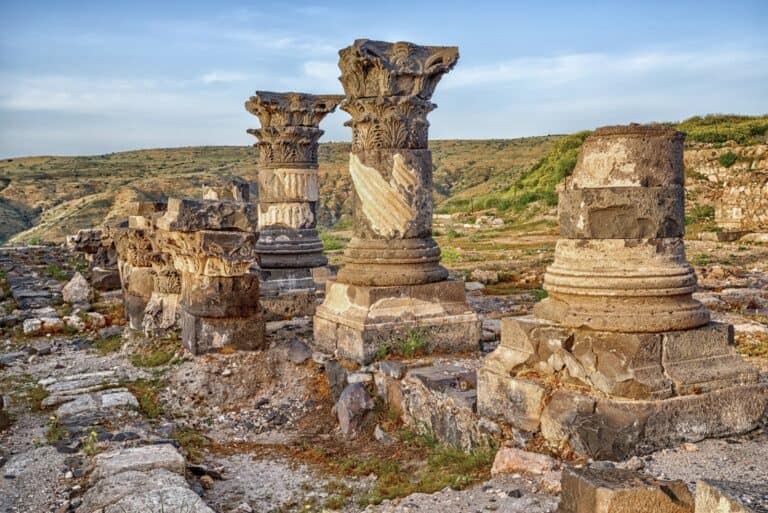
A later archeological layer, Ben-Yosef notes, attests to the fact that until 1948, the hilltop was a Syrian military post. During Israel’s War of Independence, residents of the nearby Kibbutz Ein Gev – and not the nascent Israeli army – took over the post to help maintain their security. This, too, is demonstrated at the site.
Turning Sussita into a proper national park, Ben-Yosef says, was challenging in terms of logistics and infrastructure.
“It was very complicated, because it’s on top of a hill that’s cut off from all its surroundings, which of course also provides for great views. We had to tidy up the way to the site from the southern Golan. One solution we found was solar electricity. We’re trying to be as green as possible.”
For more information on Sussita National Park, click here.






